Philippinen |
|
|
|
| Übersicht – Contents: | |
Philippinen |
|
|
|
| Übersicht – Contents: | |
Flaggen – Flags: |
|
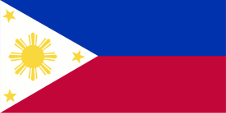 |
National-, Staats-, Handels- und Marineflagge – national, state merchant and naval flag, Seitenverhältnis – ratio = 1:2, Quelle/Source, nach/by: Corel Draw 4, Wikipedia (EN)   |
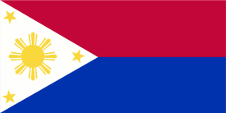 |
National-, Staats-, Handels- und Marineflagge – national, state merchant and naval flag, im Kriegszustand – in state of war, Seitenverhältnis – ratio = 1:2, Quelle/Source, nach/by: Corel Draw 4, Wikipedia (EN) |
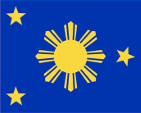 |
Gösch – naval jack, Seitenverhältnis – ratio = 4:5, Quelle/Source, nach/by: Flags of the World, commons.wikimedia.org |
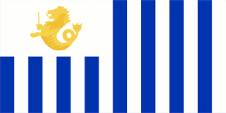 |
Zollflagge – customs flag, Seitenverhältnis – ratio = 1:2, Quelle/Source, nach/by: Wikipedia (EN), using Philippine Government, Public domain, via Wikimedia Commons |
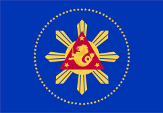 |
Flagge des Präsidenten – flag of the President, Seitenverhältnis – ratio = 7:10, Quelle/Source, nach/by: Flags of the World, Philippine Government, Public domain, via Wikimedia Commons |
historische Flaggen – historical Flags: |
|
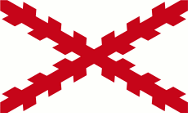 |
1565–1785, zum Spanischen Vizekönigreich Neuspanien – to the Spanish Vice–Kingdom of New Spain, Quelle/Source, nach/by: Wikipedia (ES)  |
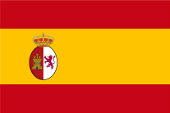 |
1785–1898, zum Spanischen Vizekönigreich Neuspanien – to the Spanish Vice–Kingdom of New Spain, Quelle/Source, nach/by: World Statesmen  |
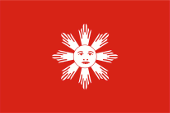 |
1897, Flagge im Unabhängigkeitskampf – flag in the fight for independence Quelle/Source, nach/by: World Statesmen, Wikipedia (EN) |
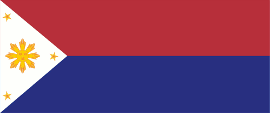 |
1898–1901, Nationalflagge – national flag, Seitenverhältnis – ratio = 3:7, Quelle/Source, nach/by: officialgazette.gov.ph file: evolutionofPHLflag |
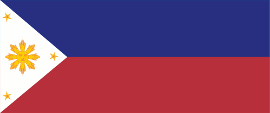 |
1901–1907, Nationalflagge – national flag, Seitenverhältnis – ratio = 3:7, Quelle/Source, nach/by: officialgazette.gov.ph file: evolutionofPHLflag |
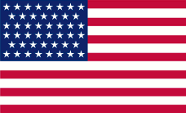 |
1907–1919, Flagge der USA – flag of USA, Quelle/Source, nach/by: Wikipedia (DE) |
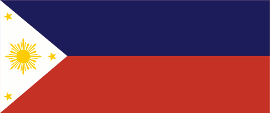 |
1919–1936, Nationalflagge – national flag, Seitenverhältnis – ratio = 3:7, Quelle/Source, nach/by: officialgazette.gov.ph file: evolutionofPHLflag |
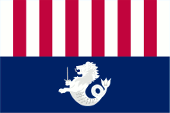 |
1935–1946, Flagge des US-Oberkommissars – flag of the US High Commissioner, Quelle/Source, nach/by: Flaggenbuch 1939, using Philippine Government, Public domain, via Wikimedia Commons |
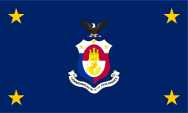 |
1935–1946, Flagge des Präsidenten – flag of the President, Seitenverhältnis – ratio = 3:5, Quelle/Source, nach/by: Flaggenbuch 1939, using FOX 52, Public domain, via Wikimedia Commons |
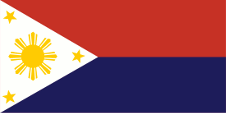 |
1936–1945, Nationalflagge – national flag, Seitenverhältnis – ratio = 1:2, Quelle/Source, nach/by: officialgazette.gov.ph file: evolutionofPHLflag |
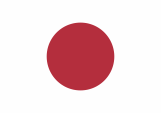 |
1942–1943, Flagge von Japan – flag of Japan, Seitenverhältnis – ratio = 7:10, Quelle/Source, nach/by: Wikipedia (EN)  |
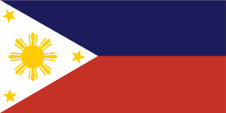 |
1945–1985, National-, Staats-, Handels- und Marineflagge – national, state merchant and naval flag, Seitenverhältnis – ratio = 1:2, Quelle/Source, nach/by: officialgazette.gov.ph file: evolutionofPHLflag |
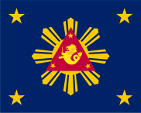 |
1947–1951, Flagge des Präsidenten – flag of the President, Seitenverhältnis – ratio = 4:5, Quelle/Source, nach/by: Flags of the World, Wikipedia (EN) |
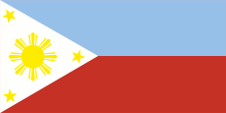 |
1985–1986, National-, Staats-, Handels- und Marineflagge – national, state merchant and naval flag, Seitenverhältnis – ratio = 1:2, Quelle/Source, nach/by: officialgazette.gov.ph file: evolutionofPHLflag |
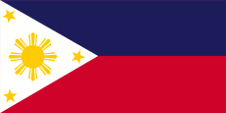 |
1986–1998, National-, Staats-, Handels- und Marineflagge – national, state merchant and naval flag, Seitenverhältnis – ratio = 1:2, Quelle/Source, nach/by: officialgazette.gov.ph file: evolutionofPHLflag |
| Die Flagge der Philippinen wurde am 12.06.1898 erstmals offiziell gehisst und zeigte nach kleineren Veränderungen in der Form des weißen Dreiecks und der Sonne in dessen Mitte ab 1936 das heutige Design. Sie zeigt zwei waagerechte Streifen in Blau und Rot mit einem gleichschenkligen weißen Dreieck am Liek. Innerhalb des Dreiecks befindet sich eine goldene achtstrahlige Sonne, umgeben von drei goldenen fünfzackigen Sternen. Die Gestaltungselemente der Flagge der Philippinen sind weitgehend freimaurerischen Ursprungs. So das Sonnenemblem und auch das gleichschenklige Dreieck. Die Farbe Rot steht für Mut, Tapferkeit, Ritterlichkeit und Entschlossenheit, Blau steht für Idealismus und Patriotismus, und Weiß für Reinheit und Frieden. Die Sonne verkörpert die Freiheit und repräsentiert jene acht Provinzen, von denen die Freiheitsbewegung ihren Ausgang nahm. Die drei Sterne stehen für die drei Hauptlandesteile: die beiden Inseln Luzon und Mindanao und die Visayan-lnselgruppe. Im Kriegszustand wird die Flagge offiziell, also per Dekret, umgedreht gehisst, so dass der rote Streifen oben zu sehen ist. Das war zuletzt zwischen 1936 und 1945 so praktiziert worden. Die Farben der Flagge der Philippinen sind zuletzt Im „Republic Act Nr. 8491“ vom 1998 festgelegt worden, wie es scheint auf: Blau = Pantone 286, Rot = Pantone 193 und Gelb = Pantone 122. Sie wurden erstmals 1955 festgelegt, allerdings auf „dunkelblau“ und „karmesinrot“. Über die Jahre wurde der Farbton des Blau recht oft geändert, so ab 1985 auf hellblau, ab 1986 wieder dunkelblau und seit 1998 könnte man von „mittelblau“ reden. Durch die häufigen Änderungen, die immer ihre Zeit brauchen bis sie sich auch in der Praxis durchgesetzt haben, wird es immer wieder zu Verwirrungen gekommen sein, so dass bis heute recht unterschiredliche Angaben dazu zu finden sind. Sicher ist, dass das Blau in der Nationalflagge das gleiche zu sein hat wie das Blau in der Flagge des Präsidenten. Diesen Rückschluss lassen Fotos zu, auf denen beide Flaggen abgebildet sind. |
The flag of the Philippines was officially hoisted for the first time on
12th of June 1898 and, after minor changes in the shape of the white
triangle and the sun in its centre, displayed the current design from 1936. It shows two horizontal stripes in blue and red with an isosceles
white triangle on the leech. Within the triangle is situated a golden sun
with eight beams surrounded by three golden five-pointed stars.
The designing elements of the flag of the Philippines are broadly of Masonic
origin. So the sun-emblem and also the isosceles triangle. The colours of the flag of the Philippines were last fixed in the Republic Act No. 8491 of 1998, it seems, at: Blue = Pantone 286, Red = Pantone 193 and Yellow = Pantone 122. They were first set in 1955, but to "dark blue" and "crimson red". Over the years, the shade of blue has been changed quite often, for example from 1985 to light blue, from 1986 again to dark blue and since 1998 one could speak of "medium blue". Due to the frequent changes, which always take time to become established in practice, there will have been confusion again and again, so that to this day there are still quite sub-directed specifications. What is certain is that the blue in the national flag is the same as the blue in the presidential flag. This conclusion can be drawn from photos showing both flags. |
| Die Flagge der Philippinen hat ihe Wurzeln in der anti-spanischen Freiheitsbewegung und geht indirekt auf die Flagge der im Jahre 1892 gegründeten Bewegung "Katipunan" zurück. Diese zeigte zunächst ein, später drei weiße "K" auf rotem Grund. Im Jahre 1896 wurden die Buchstaben entfernt und durch die Abbildung einer weißen achstrahligen Sonne mit einem Gesicht ersetzt. Nach verschiedenen Varianten wurde schließlich am 12.06.1898 – dem Tag der ersten Unabhängigkeitserklärung – die heutige Flagge gehisst. Unter der US-amerikanischen Kolonialherrschaft war die Flagge zwischen 1907 und 1917 verboten (nach anderen Quellen bis 1920). Das am 24.03.1934 proklamierte Philippine Commonwealth übernahm die Flagge offiziell am 14.05.1935. Die 1941 eindringenden Japaner untersagten die Verwendung der Flagge ebenfalls, allerdings nur bis zum 14.10.1943, als Japan die Philippinen in eine Art Unabhängigkeit entlies. Als die Philippinen am 04.07.1946 von den USA in die Unabhängigkeit entlassen wurden, wurde die Flagge für die Republik Philippinen übernommen. | The flag
of the Philippines has its roots in the anti-Spanish freedom-movement and
goes indirectly back to the flag of the in the year 1892 established
"Katipunan" Movement. That showed first of all one, later three white "K" on
red ground. In the year 1896 the letters were removed and substituted by the
portrayal of a white sun with eight beams with a face. After various
variants was hoisted on the 12th of June in 1898 – the day of the first
declaration of the independence – the today’s flag. Under the US-American colonial rule the flag was prohibited between 1907 and 1917 (by other sources to 1920). The on 24t of March in 1934 proclaimed Philippine Commonwealth took the flag officially over on the 14th of May in 1935. The since 1941 invading Japanese interdicted the use of the flag as well, but only until the 14th of October in 1943 as Japan dismissed the Philippines into a kind of independence. As the Philippines were dismissed into independence by the USA on 4th of July in 1946 this flag became tooken over for the Republic of the Philippines. |
| Die Präsidentenflagge der Philippinen ist gestalterisch an der Flagge des Präsidenten der USA orientiert. Sie zeigt ein einfarbiges blaues Tuch mit einem Kreis aus vielen weißen Sternen und darin eine goldene achtstrahlige Sonne. Die Sonne ist von einem roten Dreieck welches einen goldenen Seelöwen und drei goldenen Sterne zeigt bedeckt. Die vielen weißen Sterne sollen die 75 Provinzen der Republik repräsentieren, jedoch entspricht die Anzahl der Sterne auf der Flagge nicht nicht deren tatsächlicher Anzahl. | The flag
of the president of the Philippines is in its design orientated in the flag
of the president of the USA. It shows a single-coloured blue bunting with a circle of many white stars and in it a golden sun with eight beams. The sun is covered by a red triangle which shows a golden sea-lion and three golden stars. The many white stars should represent the 75 provinces of the republic but their number on the flag correlates not with their real number. |
| Quelle/Source: Flaggen Wappen Hymnen, Flaggen und Wappen der Welt, Die Welt der Flaggen, Wikipedia (EN), getrealphilippines.com | |
Wappen – Coat of Arms: |
|||
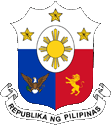 |
seit/since 1998, Wappen der Philippinen – coat of arms of the Philippines, Quelle/Source, nach/by: Wikipedia (ES), officialgazette.gov.ph file: evolutionofPHLflag | ||
 |
1905–1935, Wappen der Philippinen – coat of arms of the Philippines, Quelle/Source, nach/by: Wikipedia (ES), officialgazette.gov.ph file: evolutionofPHLflag | ||
 |
1935–1946, Wappen der Philippinen – coat of arms of the Philippines, Quelle/Source, nach/by: Wikipedia (ES), officialgazette.gov.ph file: evolutionofPHLflag | ||
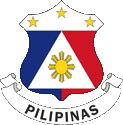 |
1943–1945, Wappen der Philippinen – coat of arms of the Philippines, Quelle/Source, nach/by: Wikipedia (ES), officialgazette.gov.ph file: evolutionofPHLflag | ||
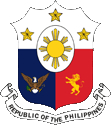 |
1946–1978, Wappen der Philippinen – coat of arms of the Philippines, Quelle/Source, nach/by: Wikipedia (ES), officialgazette.gov.ph file: evolutionofPHLflag | ||
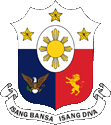 |
1978–1985, Wappen der Philippinen – coat of arms of the Philippines, Quelle/Source, nach/by: Wikipedia (ES), officialgazette.gov.ph file: evolutionofPHLflag | ||
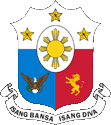 |
1985–1986, Wappen der Philippinen – coat of arms of the Philippines, Quelle/Source, nach/by: Wikipedia (ES), officialgazette.gov.ph file: evolutionofPHLflag
|

1986–1998, | Wappen der Philippinen – coat of arms of the Philippines, Quelle/Source, nach/by: Wikipedia (ES), officialgazette.gov.ph file: evolutionofPHLflag |
|
|
|||
| Das heutige Staatswappen wurde wurde anlässlich der Unabhängigkeit am 04.07.1946 eingeführt. Die Grundfarben, die Sonne und die Sterne wurden der Flagge entnommen. Der Löwe erinnert an die spanische (1596–1898), der Adler mit den drei Pfeilen in den Fängen an die US-amerikanische Herrschaft (1898–1942 und 1945–1946). Die Sonne in der Mitte symbolisiert die Unabhängigkeit des Landes. Das Wappen wird unterhalb durch ein weißes Schriftband ergänzt. Ursprünglich trug es den Landesnamen als englische Inschrift "Republic of the Philippines" (Republik Philippinen), die 1981 ersetzt wurde durch die Tagalog-Inschrift "Isang Bansa Isang Diva" (Ein Volk ein Geist). Nach dem Ende der Präsidialdiktatur des Ferdinand Marcos wurde 1987 wieder die Staatsbezeichnung in das Spruchband eingesetzt, diesmal jedoch in Tagalog: "Republika ng Pilipinas". Ein sehr wichtiges Element der Heraldik der Philippinen ist der sogenannte Seelöwe, ein Mischwesen aus Löwe und Delfin, ein Schwert in der Hand haltend. Dieses Symbol war 1596 der Stadt Manila verliehen worden und geht wahrscheinlich auf das 1565 gegründete Generalkapitanat der Philippinen zurück, das dem Vizekönigreich Neuspanien unterstellt war und bis 1898 bestand. Das Wappen des Generalkapitanats zeigte den Seelöwen in Grün und mit einer goldenen Krone auf goldenem Untergrund. Bereits 1998 wurde ein modifiziertes Wappen eingeführt, das auf den US-Adler und den spanischen Löwen verzichtet, weil sie die koloniale Vergangenheit präsentieren, jedoch wurde es offiziell noch nicht bestätigt. | The
today’s coat of arms of the state was introduced on 4th of July in 1946 on
the occasion of the independence. The basic colours the sun and the stars
were taken from the flag. The lion remembers the Spanish (1596–1898) and the
eagle with the three arrows in the claws the US-American rule (1898–1942 and
1945–1946). The sun in the middle symbolizes the independence of the
country. The coat of arms is underneath added by a white banner. Initially it carryed the name of the country as English inscription "Republic of the Philippines" which was substituted in 1981 by the Tagalog language inscription "Isang Bansa Isang Diva" (One nation one spirit). After the end of the presidial dictatorship of Ferdinand Marcos the name of the country was inserted again into the banner in 1987 but now in Tagalog language: "Republika ng Pilipinas". A very important element of the heraldry of the Philippines is the so-called sea lion, a hybrid of a lion and a dolphin, holding a sword in its hand. This symbol was awarded to the City of Manila in 1596 and probably goes back to the General Capitanate of the Philippines, founded in 1565, which was subordinated to the Viceroyalty of New Spain and existed until 1898. The coat of arms of the General Capitanate showed the sea lion in green and with a golden crown on a golden shield. Already in 1998, a modified coat of arms was introduced that does away with the US eagle and the Spanish lion because they present the colonial past, but this coat of arms has not yet been officially confirmed. |
| Quelle/Source: Flaggen Wappen Hymnen, Flaggen und Wappen der Welt, Die Welt der Flaggen, Wikipedia (EN), Volker Preuß | |
Flugzeugkokarde – aircraft roundel: |
|
 |
Flugzeugkokarde – aircraft roundel Quelle/Source, nach/by: Wikipedia (EN) |
 |
1936–1942, 1945–1947, Flugzeugkokarde – aircraft roundel Quelle/Source, nach/by: Wikipedia (EN) |
Landkarte – Map: |
Lage – Position: |
Landkarte des Landes – Map of the Country: |
|
|
| Zahlen und Fakten – Numbers and Facts: | |
|
|
|
|
|
|
|
|
|
|
|
|
|
|
|
|
|
|
| 14./15.
Jhd. · der Sulu-Archipel und die Insel Mindanao gehören zum indonesischen
Reich Madschapahit 15./16. Jhd. · Entstehung von lokalen Monarchien auf Cebu, Luzon und dem Sulu-Archipel, Islamisierung 1521 · Entdeckung durch den im Auftrag Spaniens erstmals die Welt umsegelnden portugiesischen Seefahrer Fernão de Magalhães 1526/1527 · Erforschung von Mindanao durch eine Expedition des Spaniers Loaisa 1542/1543 · der spanische Seefahrer López de Villalobos erreicht die Inseln und benennt sie nach Philipp II. dem Thronfolger des spanischen Königs Karl V. 1565 · Gründung des Generalkapitanats der Philippinen (dem Vizekönigreich Neuspanien unterstellt), Beginn der Eroberung und Kolonisierung durch Spanien 1571 · Gründung von Manila 1588 · anti-spanischer Aufstand in und um Manila 1744–1830 · nach einem Aufstand faktische Unabhängigkeit der Insel Bohol 1762 · Eroberung und Besetzung von Manila durch die Briten 1764 · Abzug der Briten 1872 · anti-spanischer Cavite-Aufstand 1892 · Gründung der Freiheitsbewegung "Katipunan" 21.04.–10.12.1898 · Spanisch-Amerikanischer Krieg (01.05.1898: Sieg der USA in der Seeschlacht in der Manila-Bucht, 12.06.1898: die Philippinen proklamieren die Unabhängigkeit, Juni 1898: Eroberung von Puerto Rico durch US-amerikanische Truppen, 03.07.1898: Sieg der USA in der Seeschlacht von Santiago de Cuba, 13.08.1898: US-Truppen besetzen Manila, 14.08.1898: Kapitulation der spanischen Truppen auf den Philippinen) 10.12.1898 · Frieden von Paris, Spanien tritt die Philippinen, Kuba, Puerto Rico und Guam an die USA ab 1916 · die USA gewähren den Philippinen beschränkte Selbstverwaltung 24.03.1934 · erweiterte Selbstverwaltung im Rahmen eines "Commonwealth" 10.12.1941 · Beginn der Besetzung durch japanische Truppen Mai 1942 · die gesamten Philippinen sind unter japanischer Kontrolle, Gewährung beschränkter Selbstverwaltung unter japanischer Oberhoheit 14.10.1943 · Japan gewährt den Philippinen "Unabhängigkeit", Status eines Satellitenstaats 20.10.1944 · Landung US-amerikanischer Truppen, Beginn der Rückeroberung und Rekolonialisierung durch die USA 04.07.1946 · Proklamation der Unabhängigkeit, die USA sichern sich dauerhaften militärischen, politischen und wirtschaftlichen Einfluss durch Pacht von 23 Militärstützpunkten auf 99 Jahre (bis 2045) 30.08.1951 · Militärpakt mit den USA 1954 · die Philippinen sind Gründungsmitglied der SEATO 1955 · Laurel-Langley-Abkommen, die USA erhalten Sonderrechte auf den Philippinen 1959 · die USA reduzieren die Anzahl ihrer Militärstüztzpunkte auf sieben und reduzieren die Dauer der Pacht auf 25 Jahre (bis 1971) 1965 · Ferdinand Marcos wird Präsident 1972–1986 · Präsidialdiktatur ("Neue Gesellschaft") des Ferdinand Marcos 1966 · die Philippinen entsenden 2000 Soldaten nach Vietnam 1977 · Auflösung der SEATO 1986 · Aktivitäten der moslemischen NMLF-Rebellengruppe im Süden des Landes (NMLF = National Moro Liberation Front) 1996 · Waffenstillstand zwischen Regierung und NMLF, eine Splittergruppe, die MILF, setzt den Kampf fort (MILF = Moro Islamic Liberation Front) 1997 · Waffenstillstand zwischen Regierung und MILF, eine Splittergruppe, die "Abu-Sayyaf", setzt den Kampf fort 2000 · starke Aktivitäten der moslemischen Abu-Sayyaf-Rebellengruppe im Süden des Landes, Sturm von Regierungstruppen auf das Hauptquartier der MILF, Zerschlagung der Abu-Sayyaf-Gruppe |
| 14th/15th
cent. · the Sulu Archipelago and Mindanao Island belong to the Indonesian
Empire of Majapahit 15th/16th cent. · nascence of local monarchies on Cebu Island, Luzon Island and the Sulu Archipelago, islamization 1521 · discovery by the in orders of Spain sailing Portugese seafarer Fernão de Magalhães (At this occasion he circumnavigated the world sphere for the first time) 1526/1527 · research of Mindanao Island by an expedition of the Spaniard Loaisa 1542/1543 · the Spanish seafarer López de Villalobos reaches the islands and names them by Philipp II. the successor of the Spanisch king Charles V. 1565 · foundation of the General Capitanate of the Philippines (subordinated to the Viceroyalty of New Spain), onset of the conquest and colonization by Spain 1571 · foundation of Manila 1588 · Anti-Spanish revolt in and around Manila 1744–1830 · after a rebellion effective independence for Bohol Island 1762 · conquest and occupation of Manila by the British 1764 · withdrawal of the British 1872 · Anti-Spanish Cavite Revolt 1892 · foundation of the freedom movement "Katipunan" 21st of April to 10th of December 1898 · Spanish-American War (1st of May 1898: victory of the USA in the sea-battle in the Manila Bay, 12th of June 1898: the Philippines proclaim the independence, June 1898: conquest of Puerto Rico by US-American troops, 3rd of July 1898: victory of the USA in the sea-battle of Santiago de Cuba, 13th of August 1898: US troops occupy Manila, 14th of August 1898: surrender of the Spanish troops on the Philippines) 10th of December 1898 · Peace of Paris, Spain cedes the Philippines, Cuba, Puerto Rico and Guam to the USA 1916 · the USA grant the Philippines a limited autonomy 24th of March 1934 · extended autonomy in the framework of a "Commonwealth" 10th of December 1941 · onset of the occupation by Japanese troops May 1942 · the whole Philippines are under Japanese control, granting of limited autonomy under Japanese supremacy 14th of October 1943 · Japan grants the Philippines "independence", status of a satellite state 20th of October 1944 · debarkation of US-American troops, start of the re-conquest and re-colonization by the USA 4th of July 1946 · proclamation of independence, the USA secure themselves long-lasting military, political and economic influence by leasing of 23 military bases for 99 years (until 2045) 30th of August 1951 · military pact with the USA 1954 · the Philippines are a founder member of the SEATO 1955 · Laurel-Langley-Agreement, the USA get privileges on the Philippines 1959 · the USA reduce the number of their military bases to seven and reduce the duration of the leasing to 25 years (until 1971) 1965 · Ferdinand Marcos becomes president 1972–1986 · presidial dictatorship ("New Companionship") of Ferdinand Marcos 1966 · the Philippines send 2000 soldiers to Vietnam 1977 · dissolution of the SEATO 1986 · activities of the islamic NMLF rebel group in the south of the country (NMLF = National Moro Liberation Front) 1996 · armistice between government and NMLF, a splinter group – the MILF – continues the struggle (MILF = Moro Islamic Liberation Front) 1997 · armistice between government and MILF, a splinter group - the "Abu-Sayyaf" – continues the struggle 2000 · potent activities of the islamic Abu-Sayyaf rebel group in the south of the country, assault of governmental troops at the headquarter if the MILF, smash of the Abu-Sayyaf Group |
| Quelle/Source: Atlas zur Geschichte, Weltgeschichte, Wikipedia (DE), World Statesmen, Volker Preuß |
| Als Magellan die heutigen Philippinen entdeckte, gab er ihnen den Namen "San-Lazarus-Archipel", wahrscheinlich weil er am 16.03.1521 – dem Tag des Heiligen Lazarus – die Insel Samar erblickte, welche zu dieser Inselgruppe gehört. Im Jahre 1542 benannte López de Villalobos die Inseln zu Ehren von Philipp II. dem Thronfolger des Spanischen Königs und Römisch-Deutschen Kaisers Karl V. um. | When
Magalhães discovered the today’s Philippines he gave them the name
"Archipelago of Saint Lazarus", probably because he spoted on 16th of March
in 1521 – the day of the Saint Lazarus – Samar Island which belongs to that
Archipelago. In the year 1542 López de Villalobos named the islands to honor Philipp II. the successor of the Spanish king and Roman-German emperor Charles V. |
| Quelle/Source: Handbuch der geographischen Namen, Wikipedia (DE) | |
|
AARM, Autonome Region des Islamischen Mindanao – Autonomous Region in Muslim Mindanao: |
|||
|
|||
| Die ARMM wurde im Jahr 2008 gegründet und 2012 noch ein wenig vergrößert, in der Hoffnung den Terror der Islamischen Moros durch Zugeständnisse an Selbstverwaltung zu mindern. Die ARMM umfasst 26.974 km², in den Regionen Lanao del Sur und Maguindanao, sowie den Inselgruppen, Basilan, Sulu, Tawi-Tawi, mit insgesamt 3.250.000 Einwohnern. Die Hauptstadt ist Cotabato City. | The ARMM was established in 2008 and enlarged in 2012, hoping to reduce the terror of Islamic Moros by making concessions to autonomy. The ARMM covers 10.415 sq.m., in the regions of Lanao del Sur and Maguindanao, including as well as the archipelagos of Basilan, Sulu, Tawi-Tawi, with a total of 3.250.000 inhabitants. The capital is Cotabato City. | ||
| Quelle/Source: Wikipedia (EN) | |||
|
Moros, separatistische Region im Süden der Philippinen – separatist region in the south of the Philippines: |
|||
|
|||
|
|||
| Die islamischen Moros der Südphilippinen (besonders auf Mindanao) kämpften die Hälfte des 20. Jahrhunderts lang für ihre Unabhängigkeit. Sie beanspruchen für ihren Staat die Inseln Mindanao, Palawan, das Sulu-Archipel und die Calamian Inselgruppe. Bewaffnete Konflikte gibt es derzeit nahezu nur auf Mindanao. Die wichtigste Untergrundarmee, die Nationale Moro Befreiungsfront, unterzeichnete 1996 einen Friedensvertrag, und 2008 wurde eine Islamische Autonome Region gegründet. Eine Splittergruppe, die Islamische Moro Befreiungsfront, setzt den Kampf neben anderen Gruppen, auch solchen wie Abu Sayyaf, fort. Das Wort "Moro" kommt aus dem Spanischen und meint "Mohr" oder "Moslem". |
The Islamic Moros of the
southern Philippines (especially on Mindanao) fought for independence for
half of the 20th century. They claim the islands of Mindanao, Palawan, the
Sulu archipelago and the Calamian archipelago for their state. Armed conflicts currently exist almost exclusively on Mindanao. The main underground army, the Moro National Liberation Front, signed a peace treaty in 1996, and an Islamic Autonomous Region was established in 2008. A splinter group, the Islamic Moro Liberation Front, continues to fight alongside other groups, including those like Abu Sayyaf. The word "Moro" comes from Spanish and means "Moor" or "Muslim". |
||
| Quelle/Source: UNPO, 2002 | |||